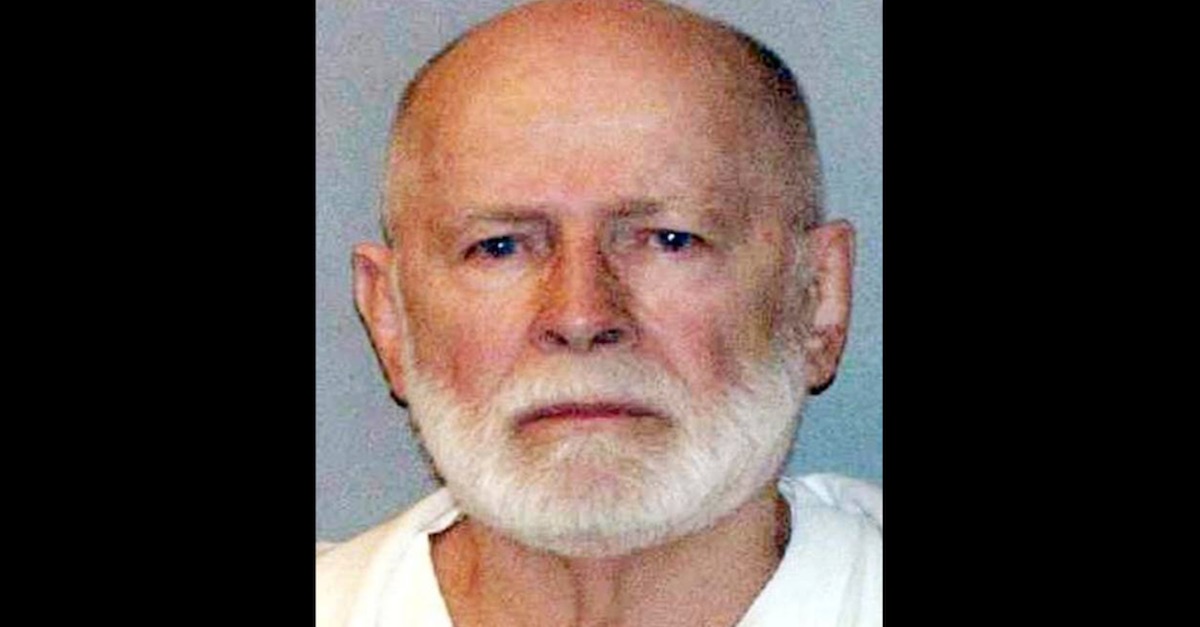
Whitey Bulger courtesy of the US Marshals Service
A federal judge in West Virginia has dismissed a lawsuit brought by the estate of the Whitey Bulger claiming the government “deliberately” sent the infamous Boston-area gangster and crime boss to his 2018 death by transferring him to a prison with inmates from New England. The 89-year-old Bulger was murdered shortly after being transferred to U.S. Penitentiary, Hazelton and placed in the facility’s general population.
In a 36-page ruling last week, U.S. District Judge John P. Bailey reasoned that the estate could not sue the U.S. Bureau of Prisons or several of the high-ranking officials named as defendants in the suit because the court lacked jurisdiction to hear a case over discretionary decisions concerning prisoner housing.
“When a federal prisoner sues under the FTCA [Federal Tort Claims Act] for injuries caused by a fellow inmate, this court and others have uniformly held the action to be barred by the discretionary function exception,” Bailey wrote. “Prison officials are afforded discretion in determining where to place inmates and whether to keep certain individuals or gangs separated from one another. Because these decisions invoke several policy considerations for prison administrators, they are precisely the kind of determinations that the discretionary function exception is intended to protect.”
In the lawsuit, filed two years after Bulger’s death, his estate claimed that despite the federal government knowing that other inmates would have been targeting the alleged FBI informant, officials deliberately failed to properly protect him.
“It is well known by law enforcement, prosecutors, and correctional officers that there are two labels you never, ever want to have if you are an inmate: informant (in prison parlance ‘snitch’) or pedophile ‘child molester’ (in prison parlance ‘chomo’),” the lawsuit stated.
An inmate with either such labels, the suit continued, “is particularly at risk and such a label can be a death sentence at the hands of inmates who are duty bound in prison culture to attack either ‘snitches’ or ‘chomos’ on sight.”
The Bulger estate sought damages against the BOP and the individual officials who decided where to place Bulger based on allegations of wrongful death, as well as physical and emotional pain and suffering.
An autopsy revealed that Bulger’s death was a homicide caused by “blunt force injuries of the head” that were sustained after he was “assaulted by other(s)” in his prison cell. Fotios “Freddy” Geas, a 51-year-old inmate already serving a life sentence for his years as a mob hitman, was questioned in Bulger’s murder but no charges have been filed against any suspects.
But Judge Bailey said that simply believing a prisoner will be in some danger does not provide grounds to sue the government.
“The BOP must provide for the protection, safekeeping, and care of inmates, but this does not guarantee a risk-free environment. Decisions about how to safeguard prisoners are generally discretionary,” Bailey wrote, again emphasizing that “suits against the Government stemming from prisoner-on-prisoner violence are barred by the discretionary function exception.”
Bulger spent 16 years on the lam, reaching the number two spot on the FBI’s Most Wanted List, before he was captured in California in 2012. He was convicted of multiple felonies including racketeering, extortion, conspiracy, and the direction of or participation in 11 murders. He was sentenced to serve two consecutive life sentences.
Read the decision below.
[image via the US Marshals Service]